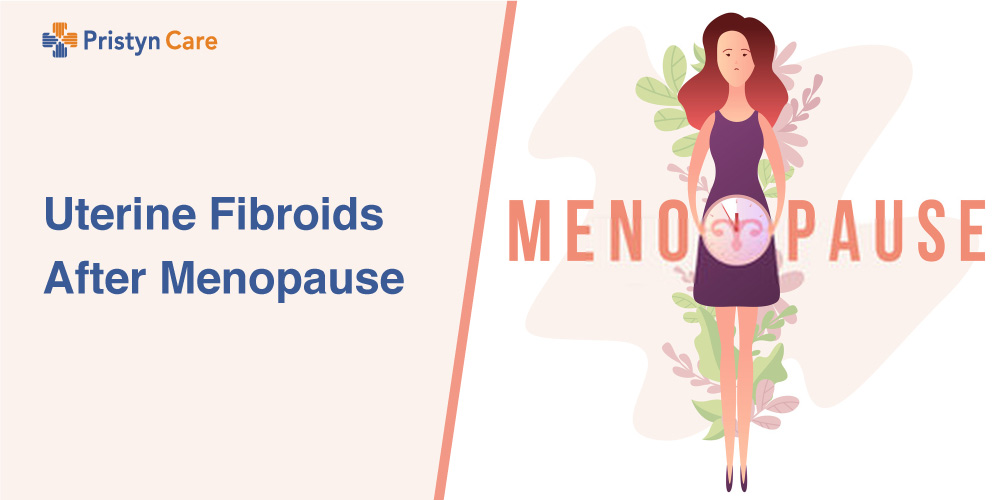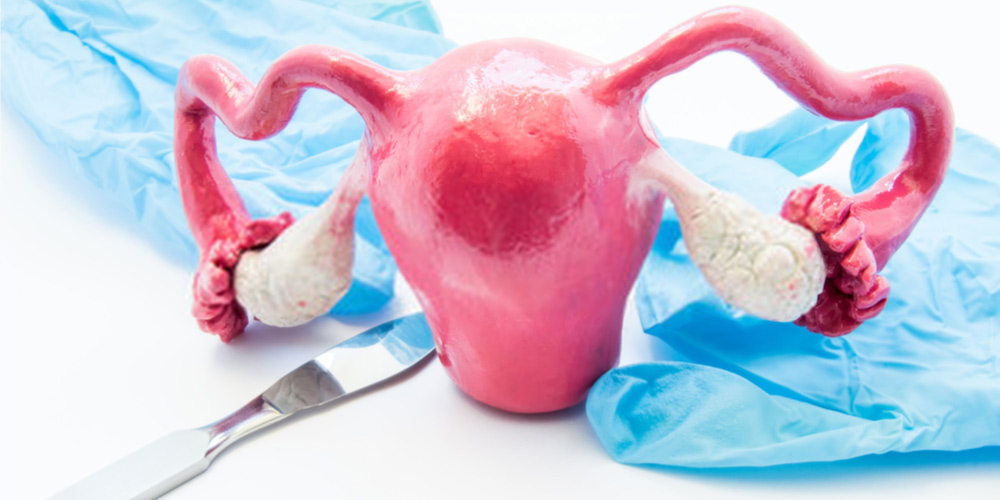
Fibroids are the tumorous growths that form in the muscular walls of the uterus. These abnormal growths in the uterus are also called myomas or leiomyomas. According to a recent study, the problem of uterine fibroids can affect up to 50% of women once in their life.
In usual cases, it is the women in their reproductive years that face the issue of uterine fibroids. Mostly, high levels of estrogen, obesity, and excess protein diet contribute to the formation of these fibroids.

Well, if you think that uterine fibroids cannot occur after menopause, it will be an eye-opener for you that it is not true. What actually happens is that the estrogen level drop-down in the body after menopause. This makes the uterine fibroids shrink and you might not even notice any serious associated symptoms. Whereas, the symptoms of uterine fibroids are quite evident when you are in your reproductive age.
Table of Contents
Symptoms of severe uterine fibroids at this stage
- Anemia
- Recurring or constant pain in the lower back
- Similar cramps like during menstruation
- Frequent urge to pass urine
- Heaviness in the lower abdomen
Why do uterine fibroids not disappear after menopause?
There are numerous reasons as to why a woman continues to face the discomforts (from mild to severe) of uterine fibroids during or after the menopause. The problem of uterine fibroids can become especially severe if a woman undergoes hormone replacement therapy. (Also Read: What Causes Uterine Fibroids?)

Hormone Replacement Therapy For Menopause
Medical experts usually recommend hormone replacement therapy for women who face discomforting symptoms due to very low levels of estrogen during or after menopause. These symptoms include poor bone density, high risks for fractures, vaginal dryness, mood swings, etc. This therapy involves a combination of both estrogen and progesterone.
Although it is a beneficial therapy, in some cases, increased levels of estrogen in the body can allow the uterine fibroids to grow bigger and probably symptomatic too.
Though it is not the only reason that contributes to severe uterine fibroids even after menopause, but definitely a major one.
Malignant changes in the fibroids after menopause
If any cancerous or malignant changes occur in the cells of the uterus, it can trigger the growth of new tumors or fibroids. Though it is not very common, when it occurs, it induces severe pain in the lower abdomen along with some unforeseen bleeding. If at all this happens, the only wise move is to head straight to a gynecologist and discuss your condition. This is the only reliable way to get rid of the troublesome condition of malignant uterine fibroids.
Smoking and alcohol can make these uterine fibroids severe
If you belong to the near menopausal or post-menopausal age group, you should avoid smoking and drinking at all costs. Smoking and alcohol have adverse effects on your overall health. And in the condition of uterine fibroids, these can be extremely harmful.
Smoking can restrict the supply of oxygen to the pelvic region, leading to worsening of the symptoms. Similarly, alcohol can raise the hormonal level in the body and can aid the growth of fibroids in the uterus. Alcohol may also trigger inflammation and increase your troubles.
Therefore, you should be extra cautious and as soon as you notice the symptoms of uterine fibroids, you should consult a doctor without delay. Postmenopausal fibroids can be quite a cause of concern and if ignored, serious problems can arise.
How to treat these uterine fibroids?
It will relieve you to know that this condition is absolutely curable even after menopause. Depending upon the size, severity, and location of the fibroids, different surgical methods of treatment are available.
Your doctor may conduct some imaging tests to evaluate these factors in your case and then suggest appropriate treatments. These surgical treatments are explained in detail below.
Myomectomy
Myomectomy is performed for the treatment of mild and small fibroids. It aims at removing the fibroids only, while the uterus remains intact. Depending upon the location of fibroids, different procedures for performing myomectomy can be adopted.
Myomectomy can be performed with the help of a hysteroscope, laparoscope, or through incisions in the abdomen. Myomectomy can be quite effective in removing small fibroids.
However, in the case of large and recurrent fibroids, your doctor may recommend a hysterectomy.
Hysterectomy
Hysterectomy is the best treatment option for the removal of large, severe, and recurring fibroids. It involves the removal of some or all parts of the uterus.
Hysterectomy can be both partial or total. Usually, in partial hysterectomy, the upper part of the uterus is removed and the cervix and other parts remain intact. This is carried out when fibroids are a recurrent problem in this region of the uterus.
Total hysterectomy
Total hysterectomy, on the other hand, involves the removal of the complete uterus along with the cervix. In rare cases, your doctor may remove the fallopian tubes as well.
Total hysterectomy is carried out when the clusters of fibroids are large and widespread.
For near menopausal and postmenopausal women having uterine fibroids, total hysterectomy is the best treatment option. It prevents the fibroids from becoming cancerous and therefore, eliminates the risk of any further complications associated with uterine fibroids.

Nowadays, the laparoscopic procedure is widely used for carrying out hysterectomy. It is the most technically advanced treatment of uterine fibroids available at the moment. Laparoscopic hysterectomy is minimally invasive and is absolutely safe.
So if your doctor recommends you undergo a hysterectomy, you should definitely choose the laparoscopic procedure.
To your benefit, this treatment of laparoscopic hysterectomy is available at Pristyn Care. You can get in touch with us to know all about the treatment.
Also Read:







